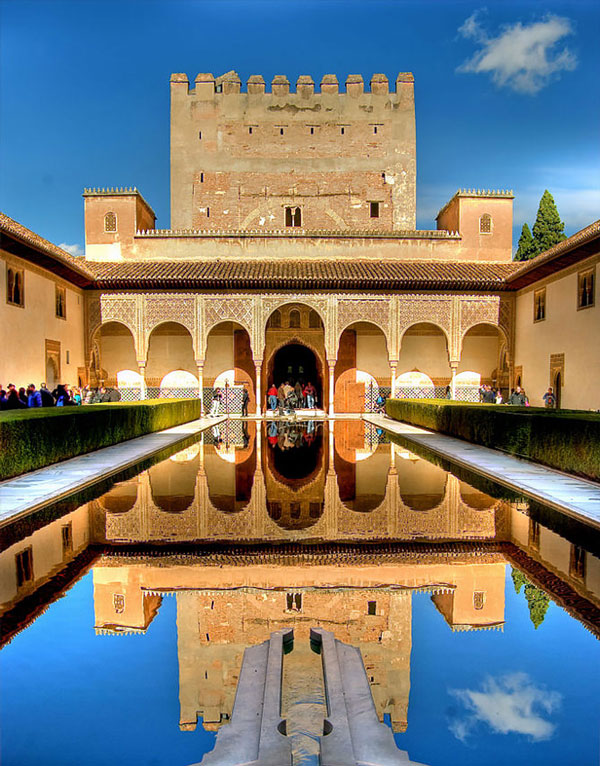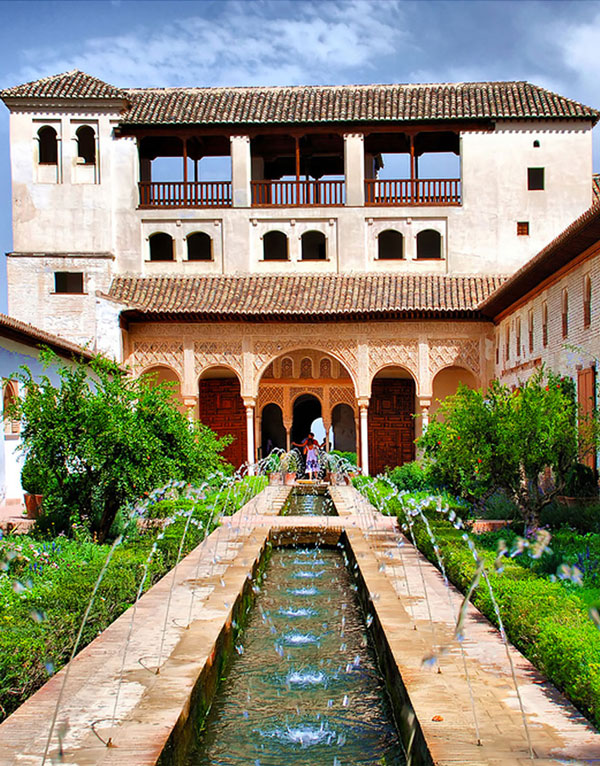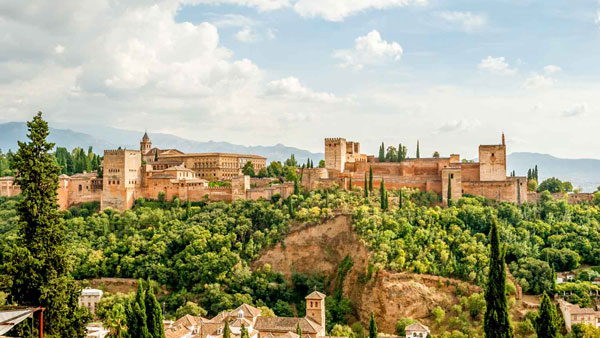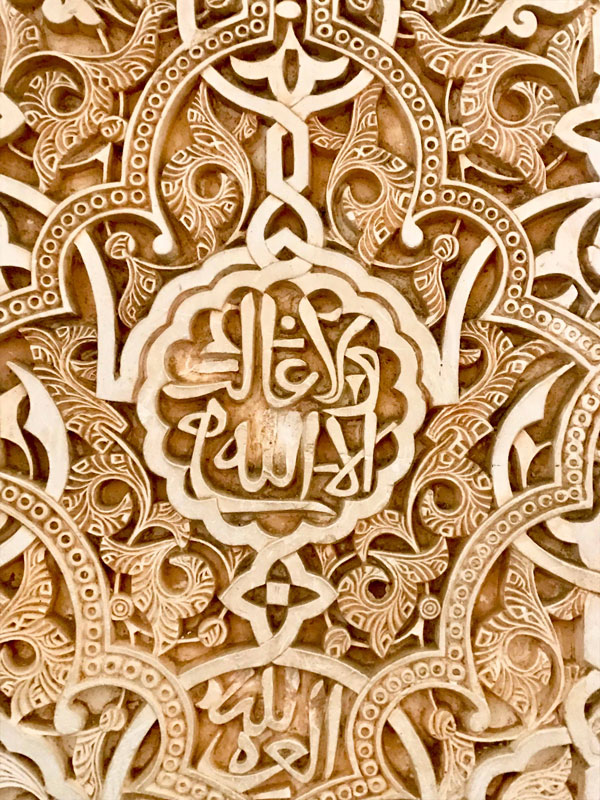The staggering beauty of the Sierra Nevada mountain range. Peaceful rolling hills and patches of greenery. The confluence of four rivers; the Beiro, the Darro, the Genil and the Monachil. A light Mediterranean breeze and narrow cobblestone roads filled with mystery, intrigue, and crowded cafes. All surrounded by picturesque Hispano-Moorish architecture.
This is the feeling of standing in history. A region in Southern Spain where the native Iberians, Greeks, Romans, Byzantines, Jews, and Muslim Moors have all called home. This is Granada, Andalusia.
Where today you’ll find 7 million tourists visiting yearly, was once a small Jewish town known as “Garnata” or “Hill of Strangers”. It was named this because of its location on a low plain, making it vulnerable to attack. The first attack being that of the Berber Zawi ben Ziri, a Moorish ruler, who established an independent kingdom for himself at the Taifa of Granada.
It wasn’t long before the city was transformed into one of the most important cities of Al-Andalus, the Arabic term for Andalusia. By the end of the 11th century, the city had spread across the Darro to reach the hill of the future Alhambra, and the Albayzín neighborhood.
Following the departure of prince Almohad, ambitious Ibn al-Ahmar established the Nasrid Dynasty, what came to be the longest reigning Muslim dynasty in Spain. Although since the Reconquista was already in full swing by then, the Nasrids cleverly aligned themselves with Fernando III of Castile to officially form the Emirate of Granada in 1238.
But, of course, a trip to Granada (or a trip down Granada’s memory lane) is not complete without mention of the majestic Alhambra. The shining crown of Islamic architecture in Spain and a UNESCO World Heritage Site.
The Alhambra
The Alhambra, which once served as the palace of Muslim rulers, now welcomes scores of visitors through its doors each year as one of Spain’s most popular tourist attractions.

(Image Source: www.alhambra.org)
The Alhambra gets its name from the Arabic “Al-Hamra”, meaning red or crimson castle. It was initially constructed for military purposes as a small fortress on the remains of Roman fortifications. Then it was ignored for some time. And then, it passed through the hands of ruler after ruler, each adding a little more decadence to the site than the one before them.
The first to renovate and restore the old fortress was Moorish emir Mohammed ben Al-Ahmarof of the Emirate of Granada. It was then converted into a royal palace in 1333 by Yusuf I, Sultan of Granada.

And, interestingly enough, after the conclusion of the Christian Reconquista in 1492, the site became the Royal Court of Ferdinand and Isabella, the very same place where Christopher Columbus received royal endorsement for his expedition.
It wasn’t long before Charles I & V got his hands on the site and commissioned it to be transformed into a Renaissance palace, fueled by design of the revolutionary Mannerist style influenced by Humanist philosophy. This direct juxtaposition with the original Nasrid Andalusian architecture was surely a much better fit for the Holy Roman Emperor. However, his plans were left incomplete due to the Morisco rebellions in Granada.
…which leaves us with what we have today. A unique palace situated on the hill overlooking Granada, with design influences from both Moorish architecture and the Renaissance.
While visiting you’ll find that there are three sections to the Alhambra: the ornate Nasrid Palaces, the Alcazaba (the battlements) and the Generalife (the gardens). The site’s most celebrated structures are the three original royal palaces:
The Comares Palace
The Comares Tower, the largest tower of the Alhambra, contains the Salón de Comares or Hall of the Ambassadors, which was a throne room built by Yusuf I. This room exemplifies the epitome of what makes the Alhambra so unique, it’s diverse decorative and architectural arts.

Breathtaking views are visible through the illuminating double arched windows, while arched lattice windows set high in the walls provide even more light. As far as the eye can see are more lavishly decorated walls with geometrically patterned tiles. Intricately carved stucco covers the remaining surfaces, organized in bands and panels of curvilinear patterns and calligraphy.
Palace of the Lions
The Palace of the Lions, or Palacio de los Leones, is adjacent to the Comares Palace but considered its own independent building. The two structures were only connected after Granada was conquered by the Christians.

The palace’s most celebrated feature, a fountain with a complex hydraulic system consisting of a marble basin on the backs of twelve carved stone lions, was built by Muhammad V. An arched covered patio encircles the fountain, held up by a series of slender columns and displays of fine stucco carvings.
The Partal Palace
The Partal Palace or Palacio del Partal is one of the oldest palace structures in the Alhambra complex. Built in the early 14th century, it is also known as the Portico Palace. This is because of the portico, or porch, that is formed by a five-arched arcade at one end of it’s large pool.
Generalife
Beyond the walls of the Alhambra lies the marvelous Generalife. The Palacio de Generalife, literally translating to “Architect’s Garden”, was the summer palace and country estate of the Nasrid rulers.

(Image Source: www.alhambra.org)
The gardens were built during the reign of Muhammad III and redecorated shortly after by Abu I-Walid Isma’il. However, today’s representation of the garden is a reconstruction of questionable authenticity.

The Generalife was designed to be an earthly paradise. In Moorish culture, the concept of heaven was closely linked to the notion of the garden. This is probably why every turn you take while exploring seems to delight your senses even more.

The complex consists of the Patio de la Acequia, or Water-Garden Courtyard, a long narrow patio ornamented with a water channel and two rows of water fountains. The whisper of the running water, together with the reflections of the light, perfume of the aromatic plants and delicate decor of the palace make for an intoxicating experience.
On your next trip to Granada, don’t be in a hurry. Take your time as the Spanish do, enjoy a long siesta and savour every site you see. Whether it be the breathtaking views of the Sierra Nevada, the exquisite architecture of the Alhambra, or the lush gardens of the Generalife. Let the atmosphere and rich history of the al-Andalus consume you.




